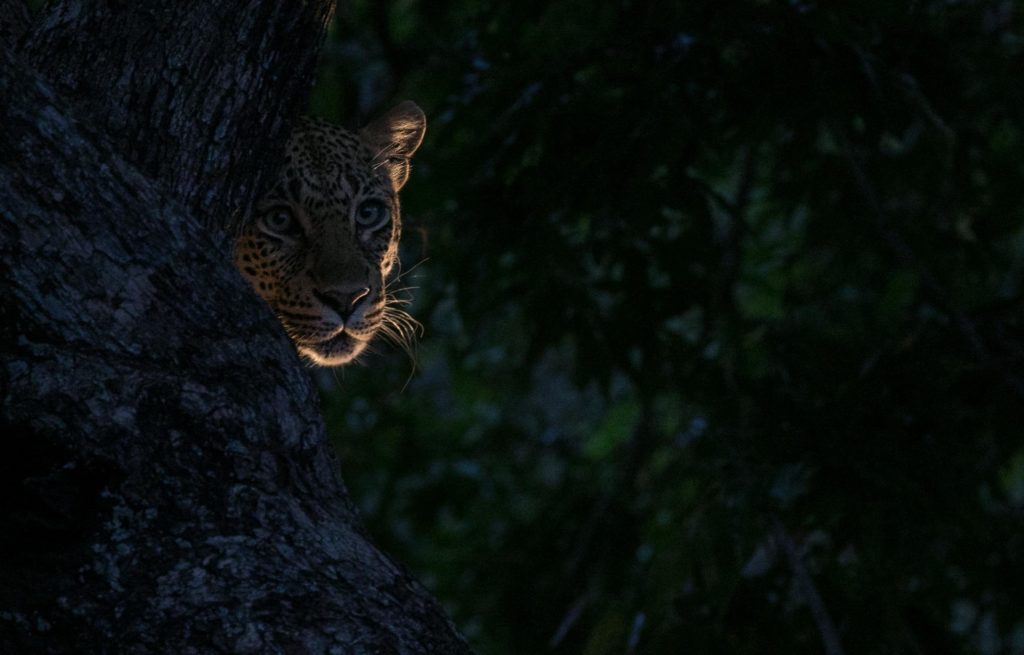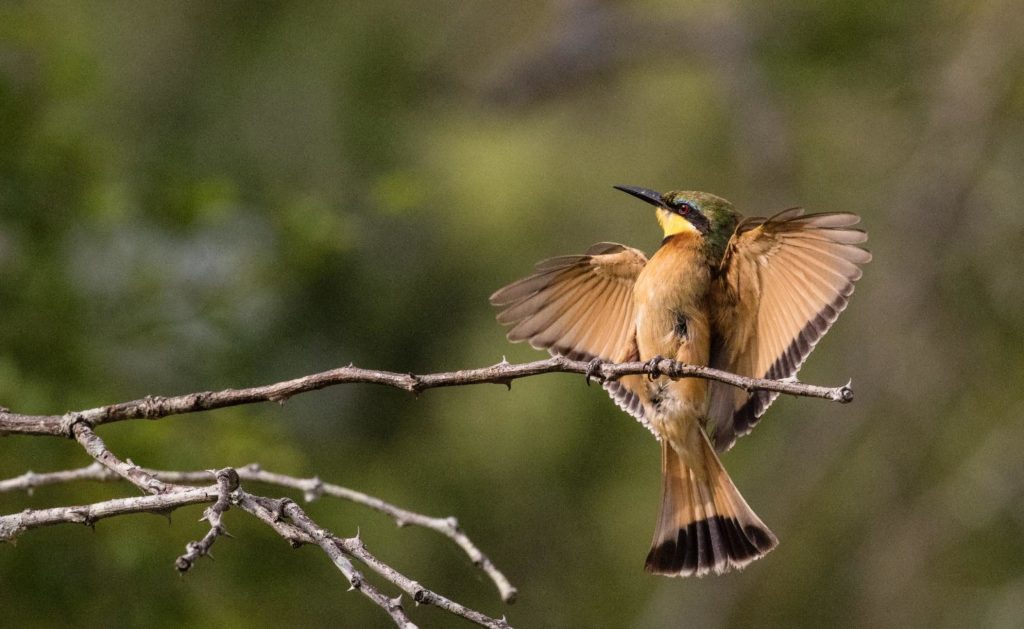Why the story really matters
“I’ve realised people will forget what you said, people will forget what you did, but people will never forget how you made them feel”.
Maya Angelou
“In my early days of exploring the Okavango Delta, I have a scene in my head which comes to mind. A deeply winkled and carved face of an old croc hunter. It was his stories of old that I have engraved in my memory”, CM Travels Co Founder Murray Forbes.
These images tell a story, one unique to Theo. A good friend and excellent Safari guide, Theo shares some of his stories with us.

Essence
After a long afternoon of tracking this leopardess, we eventually found her lazing in a beautiful Jackal Berry tree along the banks of the Sand River in that quintessential leopard manner. As the light was fading, as and when leopards do, she began to take in her surroundings with that curious nature so intrinsic of cats in preparation for the night’s activities.
Evidentially there was next to no light available by this time but we had managed to loop up onto the bank, now almost at eye level whilst a fellow ranger gently illuminated the leopard from a distance below in the hope of showing his guests. With the shutter speed as slow as I dared go and the ISO pumped up to compensate for the lack of light entering the camera, I managed to sneak a lucky shot in before we headed off.
For me this image whilst being dark and grainy and a little too cold is one of those that rather captures the moment instead of being one of top quality. For me this reflects and captures more that essential shy and illusive nature of these beautiful cats and that ever present inquisitive and alert demeanor.

Patience
On an overcast and fairly dreary day with not much being seen, myself and a fellow ranger decided to join an extremely busy pair of Little Bee-eaters as they swooped and divided for the small insects flying around their burrow. For over an hour we positioned ourselves around their perches of choice, waiting for the signal of GO GO GO GO from one another before letting off a volley of rapid fire shutter, in the hope of capturing the full splay of the birds as they came into land.
Not only being extremely good fun as we challenged ourselves to learn and anticipate the movements of the small birds, we were constantly fiddling with settings as the clouds stole and released our light. Here of course it is necessary to shoot at a quick shutter speed but also to open up the aperture creating a greater depth of field so as to get the whole bird in focus as it comes into land. Again I have been quite amazed with the these new DSL cameras and their ability to be crisp at high ISOs even though I generally try and keep the ISO down as much as possible.

Light
They say that light is to the photographer as what paint is to an artist. This I would say is very true however when it comes to wildlife photography I have seen too many people say “oh the light has gone” or “its now so flat” and put down their cameras despite there being beautiful moments happening all around them. The first two images were taken in fairly poor light conditions yet still something was able to come of it, so we shouldn’t full into that trap. However when good light is available, that’s when the magic starts to happen. The following image is just an example of how good lighting can make for a beautiful image.
Here we were lucky to spend time with a full bellied male leopard as he watched the sunset from a stunning Marula tree on a chilly winter evening. Here I over exposed a little, in order to white out the sky with a little post editing and thus contrast the textures of the tree and the leopard all enshrined in some beautiful golden light.
Here is a window into Theo’s background and why he so enjoys the wilderness.
Winter in Southern Africa is an incredible thing. Whilst across the world and especially in the Northern Hemisphere, winter means cold, snow, rain, wind and short days and although this has its appeal for many, for us winter relates to something different all together. In the southern countries of Africa winter is in essence just a mild version of summer. Our days get shorter yes and the mornings are chilly, but when the rainy season ends leaving us in a perpetual state of clear sunny skies, the tropical winds that blow in the summer die down and we are left with the most beautiful weather imaginable.
From about the time I was able to assist in pitching a tent almost every winter holiday was spent exploring the marvellous reserves that Southern Africa has to offer. Armed with a Land Rover, tent and a nose for adventure we travelled to some of the most remote pristine and incredible wildlife havens on offer. I completed the initial requirements and qualifications needed to be a recognised field guide in South Africa. This would allow me to become involved with one of the most incredible reserves on the continent.
The oldest private reserve in the country and for many years the largest, this unbelievable piece of Africa offers arguably the best game viewing in Africa. It was here, through living and immersing myself in the African bush that my boyhood love of the wilderness grew into an inexplicable part of my being. The learning both of the natural world, myself and of others was immense during those initial months of training and was a chapter of my life that will stay in the highlight reels probably to the end.
Soon after that my little point and shoot digital camera that I had inherited from my parents to document our family bush adventures became undeniably inadequate. Thus after my first few months of training and eventually working, saving every last penny, I brought a canon 7D mark II and a second hand Tamron 70-200 f/2.8 which was all I could afford at the time.
This would form the base on which I would grow and develop the little photographic skills that would allow me to capture those moments we were so privileged enough to be witnessing on a daily basis. Later, after more saving and research I was to buy the canon 100-400 f/4.5-5.6 LSM II, which gave me a great combination and one that I would recommend for any amateur wildlife photographer.
Photography as I have learnt is extremely subjective, like most forms of art, the beauty or message within the image is truly in the beholder. Therefore it is difficult I find to criticize other images although there are some basic fundamentals that are helpful to know when it comes to wildlife photography.
The one underlying factor in this form of photography is that we have no control over our subjects what so ever. Because of this we find images that capture breath taking moments yet are maybe not so technically sound and others that have been crafted extremely beautifully through technical astuteness and use of light but are not the most extraordinary of moments by any measure. It is when those two aspects of moment capturing and technical shrewdness and creativity come together where one finds those truly great images.
Want to find out about our Southern Africa Safari?
